Premier League uses data to nurture English football talent
- Published
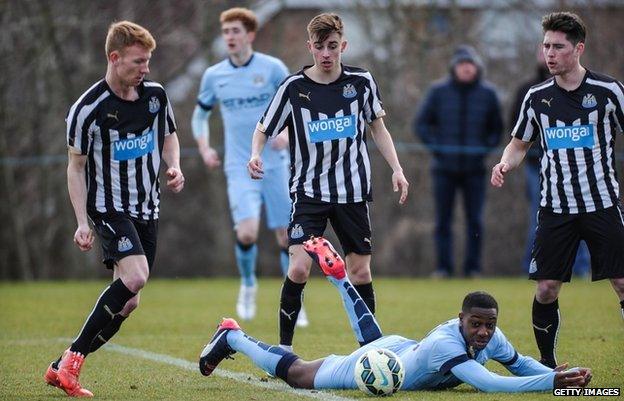
The goal is to bring players through from academy level to the first team
The Premier League in England has come in for criticism over the lack of young home-grown players coming through the ranks from club academy level to first team football.
The issue hit the headlines again this week, with Football Association chairman Greg Dyke demanding changes in top-flight clubs' squads to ensure young English players get more game time.
However, behind the scenes 29 clubs from across the Premier League and Championship - those which operate England's top-rated youth academies - are looking at innovative ways to help turn the best youngsters into the stars of tomorrow.
Over the past year a number of data-based initiatives have been introduced in these academies to ensure youngsters are not needlessly discarded before realising their full potential.
At present in the top clubs, just 0.5% of Under-9 players get all the way through the ranks to the same club's first eleven - a 1-in-200 chance.
'Black hole'
"Football is an industry that has been running for hundreds of years, with hundreds of thousands of players developed," says James Bunce, the Premier League's head of sport science.

Matt Target (stripes, centre) has come off the Southampton FC production line
"But as an industry we don't know what it takes to become a professional player, or international player. It is pretty much a black hole, but we are starting to fill that void now.
"The clubs are working hard, pushing forward."
A major part of this new data approach includes making sure players are not overlooked because of the month they were born - those born in a certain part of the year can be less physically developed than others.
Clubs are sharing information on growth and maturation, and on physical testing, so that accurate benchmarks can be established, and players are assessed not just on their chronological age but also on their biological development.
Mr Bunce says the main goal is for clubs to produce their own players for the first team., external
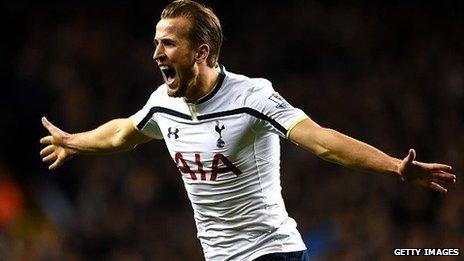
Harry Kane came through the youth ranks at Tottenham Hotspur
However, if a player does not make the Premier League grade, Mr Bunce says the effort will not have been wasted if the player reaches his maximum potential and goes on to a career in the Championship, League One or League Two.
He also said that the aim was not to "battery farm" home-grown players to sell on for profit, but that developing their own good young players could help clubs become more profitable.
Mr Bunce has been at the Premier League for 12 months, after eight years as head of athletic development at Southampton, a club known in recent years for developing a clear path for young talent into the first team.
Calendar conundrum
One of the issues the Premier League has to address is the bias at academy level towards players born in the September-to-November quarter of the calendar year, a phenomenon known in sport as the "relative age effect".
This is a phenomenon associated with the cut-off dates for age group competition. The age group into which each Premier League academy player is placed is determined by his age on 31 August.
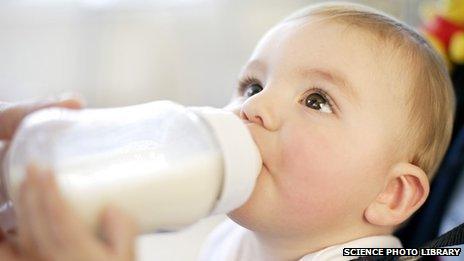
When you are born could determine if you will be a footballer
It means children born in September will have a physical advantage over those born in August, because they will have had nearly a whole extra year to grow and develop. Yet the two will be in the same football team.
In the Premier League academies it means that player recruitment is heavily skewed towards those born in the September-to-November period - accounting for some 45% of the intake - whereas those born in the June-to-August quarter provide just 10% of the young players.
There is a similar trend with regard to Premier League players, with "summer born" players least represented in teams, but the imbalance is not as dramatically pronounced as at academy level.
Elite level
Mr Bunce says the discrepancy is not down to the UK birth-rate, as there is a fairly equal distribution of babies being born across the calendar year.
"And in the England national team squad there is an equal distribution of players across the four quarters [of the year], which suggests that at elite level the "relative age effect" does not occur.
"We're now looking at what it takes to become a Premier League player irrespective of when you were born in the year. We are looking to identify talent that might not be properly developed at present, to make sure it goes through the academy system."
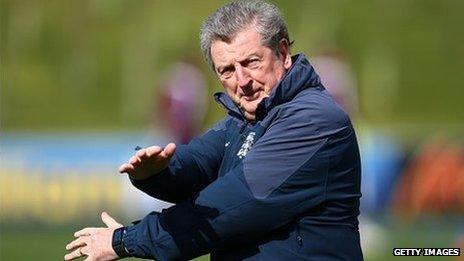
England manager Roy Hodgson has not been affected by the 'relative age effect'
To help in that ambition, the 29 clubs are sharing data about their youngsters - although the players remain anonymous when data is forwarded for collation.
A major part of this is the young player growth and maturation project, with 140 staff at the clubs taught how to take players' growth measurements accurately.
In addition the Premier League has provided standardised physical testing equipment to clubs, to again ensure uniformity in the way the data is collected.
All this should enable clubs to compare the physical progress of an individual player accurately, against a benchmark of their peers, while also taking into consideration the period of the year in which the youngster was born.
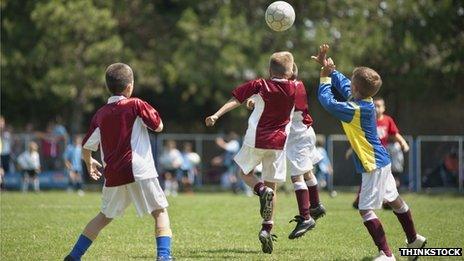
In future youth tournaments may be based on maturation level not age
"It enables clubs to tell if a player is an early, late, or on-time developer," says Mr Bunce, who was speaking at a Sports Analytics summit, external in London organised by Innovation Enterprise.
"A player who looks slow can still develop, and may just need more time. And the fastest player might actually be behind on his developmental trajectory."
One aim of the data harvesting is to ultimately allow the Premier League and clubs in future to be able to group boys based on their physical maturity rather than age groups. This could lead to tournaments where boys are put in teams based on maturation level rather than age.
Building knowledge
Meanwhile, a Premier League injury surveillance programme has been established, with expert Dr Colin Fuller, who headed up major injury data projects in rugby union, brought in.
"We know that 100% of players will get injured at some point, whether it be a severe injury or a one-day one," says Mr Bunce. "We don't know if there are any traits, and that is something we want to know more about. It is about how we can use data to build knowledge to prevent injuries."
Looking ahead, in future the Premier League would also like to add two further data projects - one around psychology and one for technical skills.
"We understand that the psychological aspect is an intensely important element in sport, but would like to know more," says Mr Bunce.
On the technical skills criteria, the Premier League has held discussions with the heads of coaching at clubs "so that we can work together to establish technical benchmarks for our young players".